Imagining the future of social mobility critically, but not too seriously
Imagining the future of social mobility critically, but not too seriously
When imagining the future of social mobility, it is easy to conjure up images self-flying cars and such, but how could the experience for people, and not (for) the technology change in the future? How could the daily commute be more than a necessary evil? Could the passengers spend this time better?
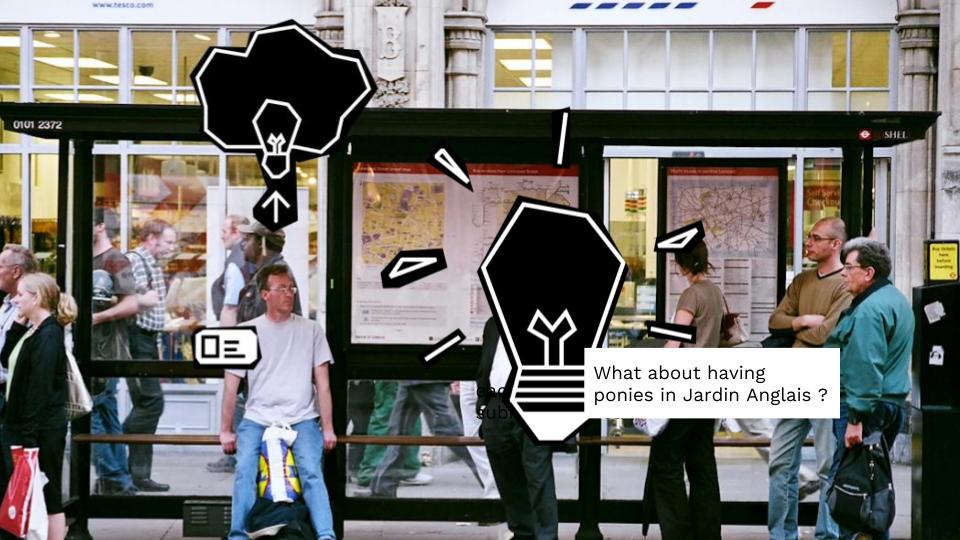
illustration: Mathilde Buenerd
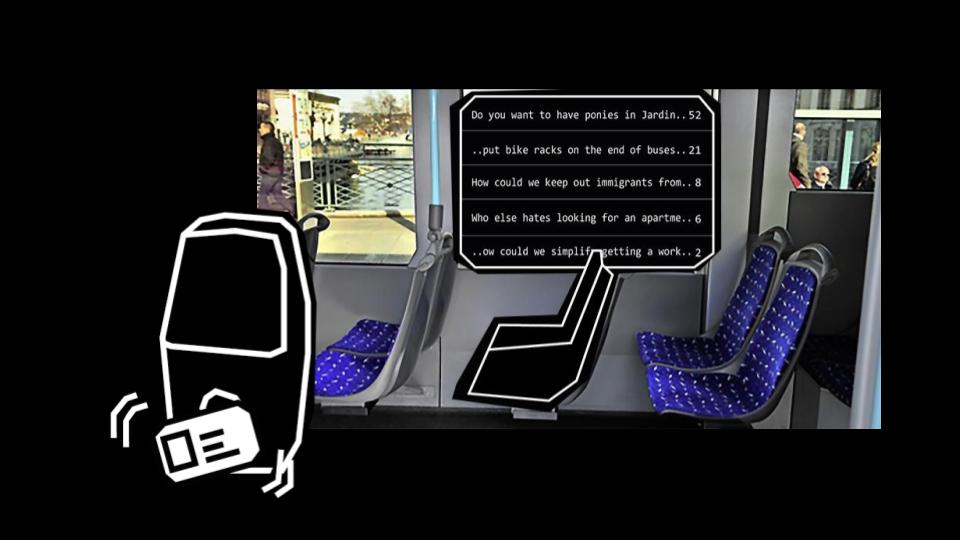
illustration: Mathilde Buenerd
illustration: Mathilde Buenerd
So many of us spend a lot of time commuting, when we are confined in the same physical space with little or no interaction among the people we share the same city with, when democracy depends on debates in our everyday life. What if we engaged in crucial conversations about our shared living space during the time we already spend on the bus?
With Democracy on wheels, everyone who holds a public transport pass can submit ideas to improve the city. These ideas are questions meant to open the discussion between the passengers. One idea is connected to each pass at a time, it can be changed anytime online, and it has to fit in 160 characters.
Every passenger can vote on their fellow passenger's ideas to improve the city. The more votes an idea gets, the higher it is on the screen.
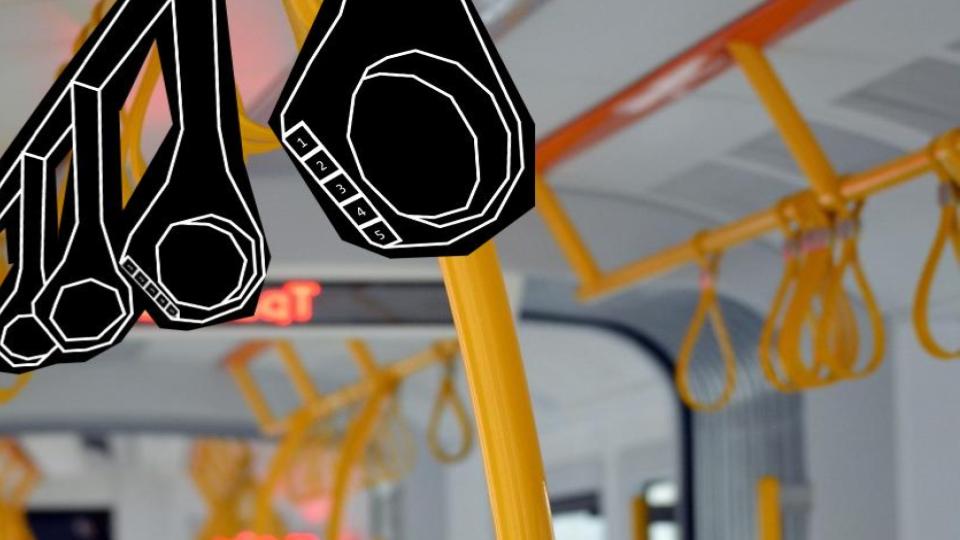
illustration: Mathilde Buenerd
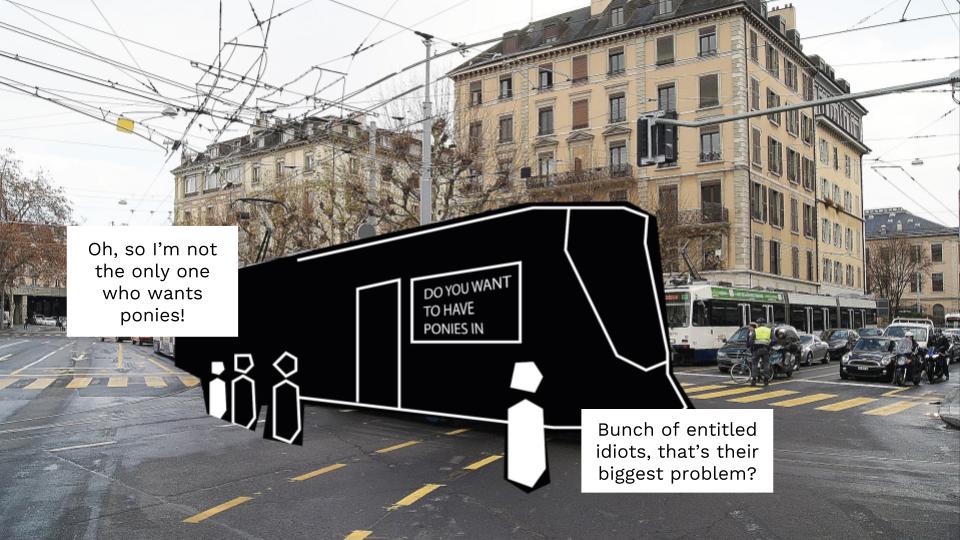
illustration: Mathilde Buenerd
As soon as someone checks in with their pass, their idea is displayed for everyone anonymously on a common screen which can show 5 ideas at the same time.
The currently winning idea is displayed on the outside of the bus, so the debate is also expanded for the pedestrians.
This is Anna's, one of our persona's user journey: she holds a TPG pass and interacts with the system at all touchpoints: she submits a question, she debates and votes, the blue lines show how her mood changes, depending on different outcomes, the yellow spot shows the level of her civic engagement during her actions and the red shape shows her interaction with others, when is she debating.
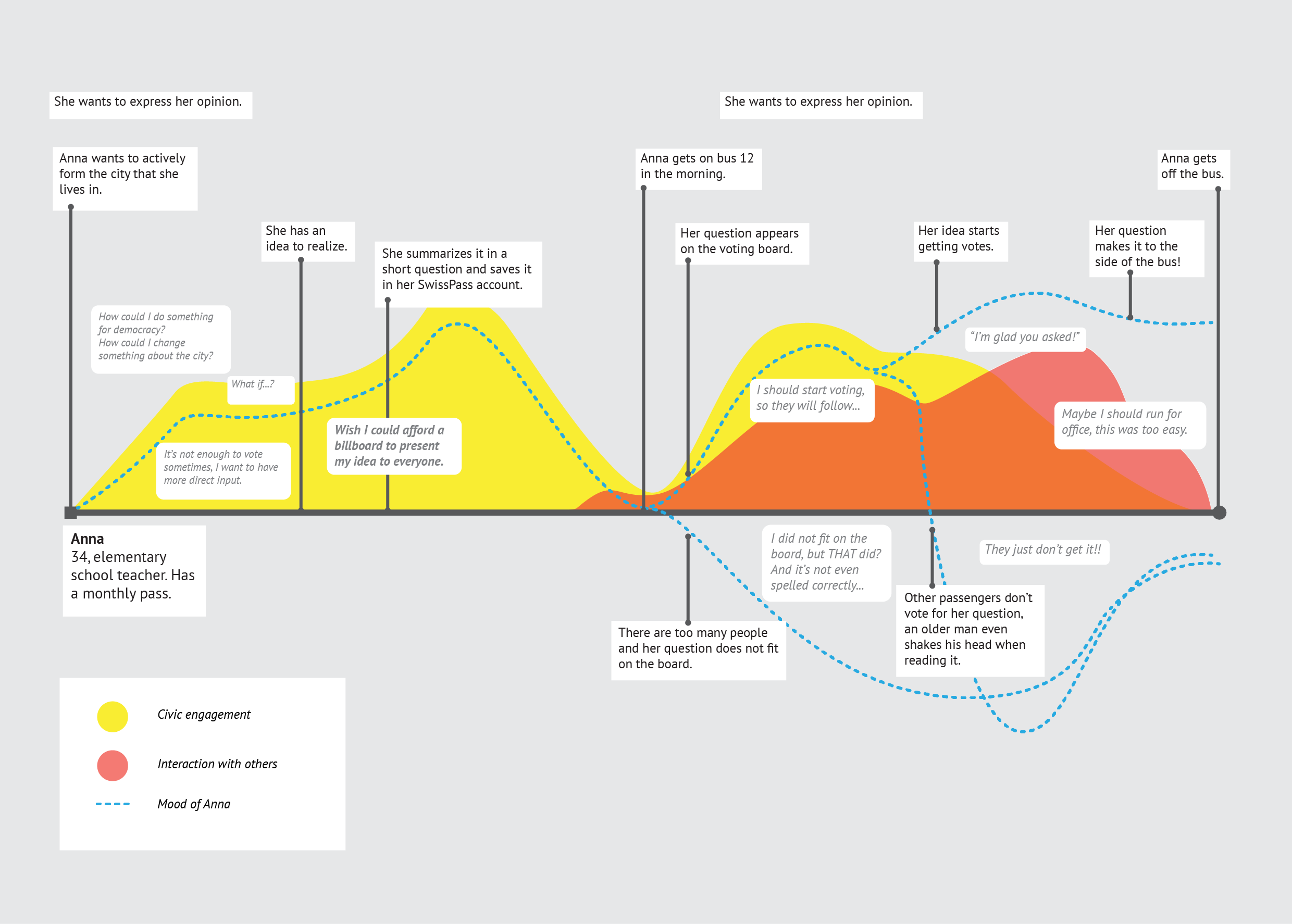
These other two journeys are for the other personas, Ben on the top is a passenger with no TPG pass, so he interacts with the system irregularly, and then he talks about or supports a question. Carla only sees the message on the outside of the bus, but takes no part in the debate.
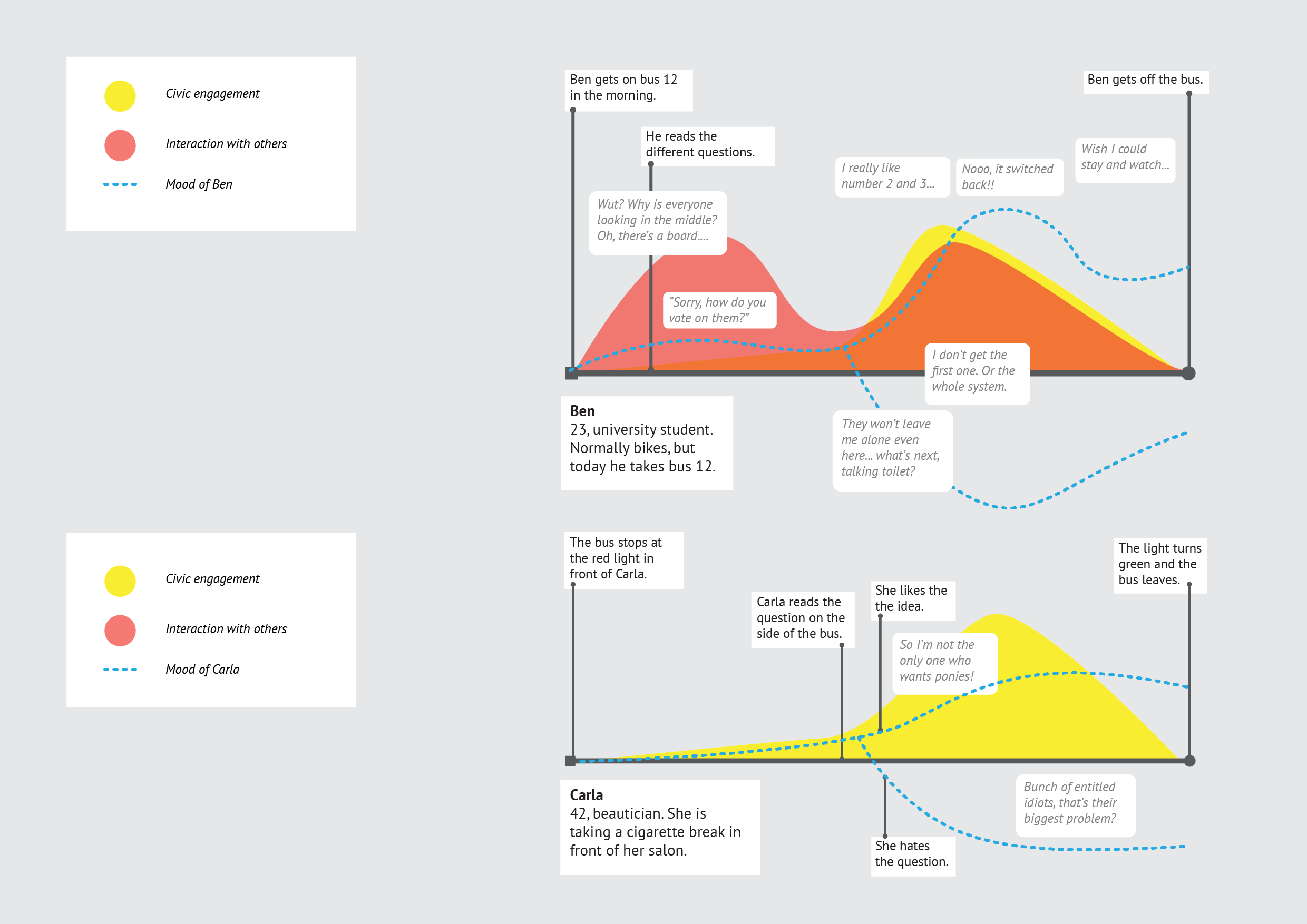
To clarify the different stakeholder’s goals, we also did two value proposition canvases: what can Democracy on wheels offer to Anna, who buys a TPG pass regularly and commutes almost everyday. She not only wants to get from point A to B, but have a good experience while doing so, get to know people who she lives close to, feel heard by the city council, etc.
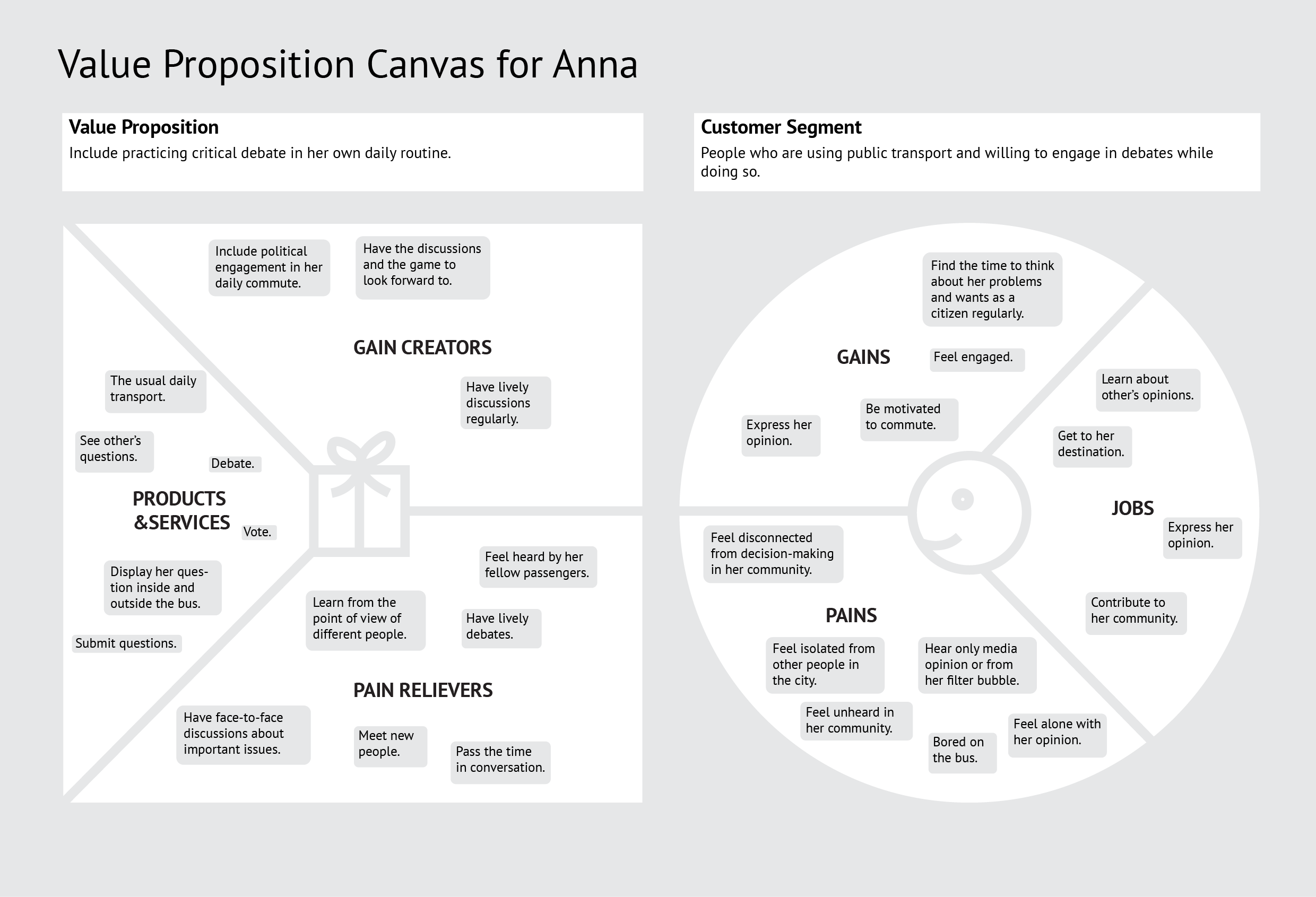
The other big stakeholder is the city council, who has different needs and expectations than Anna, like reducing the number of cars and getting people to vote by keeping them involved between votes.
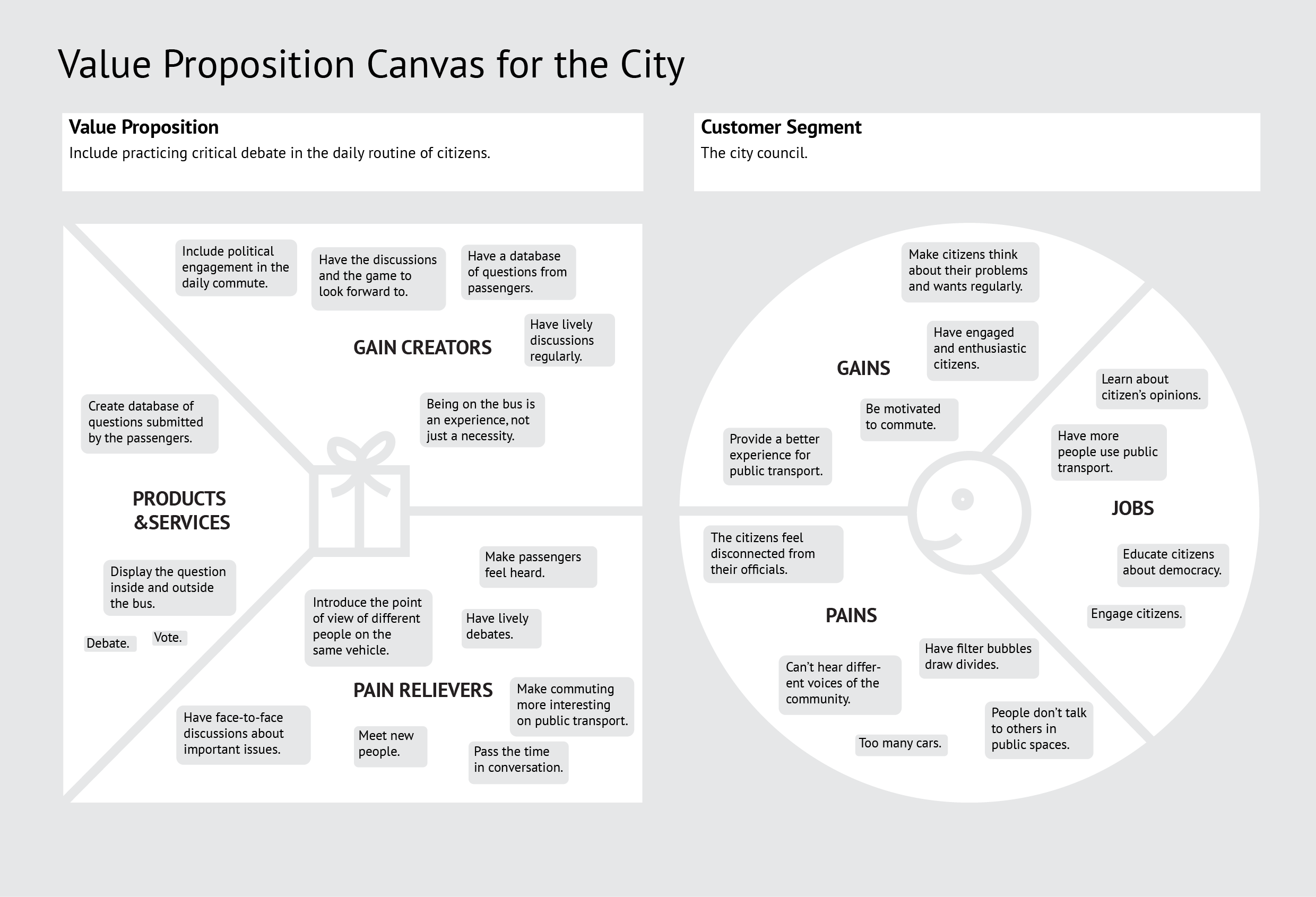
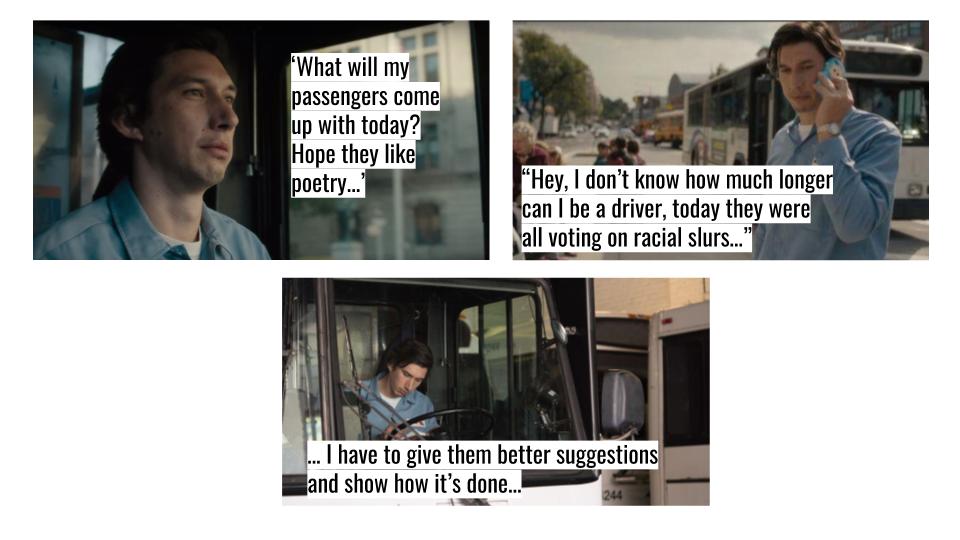
And to show how much fun we had during this project, here's a storyboard from an early phase of the exploration!
HEAD Genève Media Design MA 2017
Workshop on social mobility
Team: Mathilde Buenerd, Julia Racsko